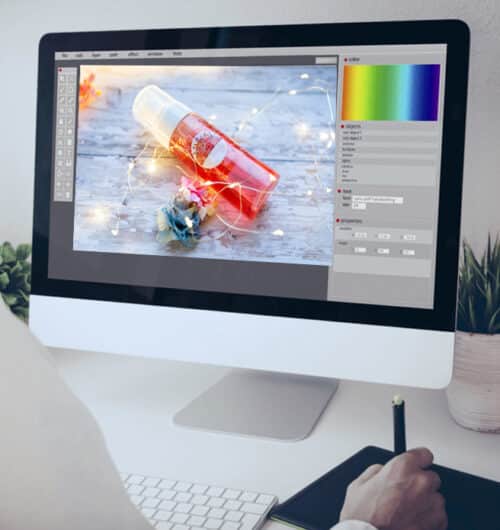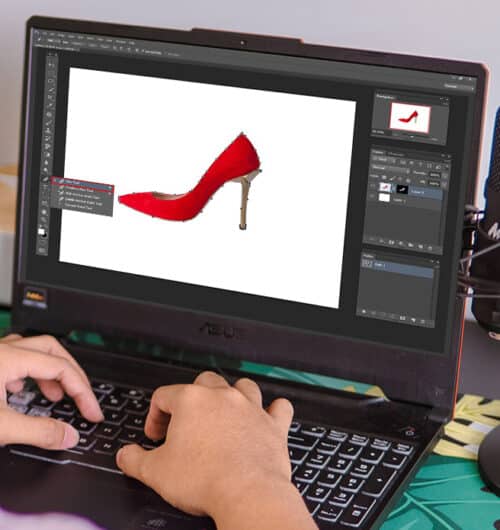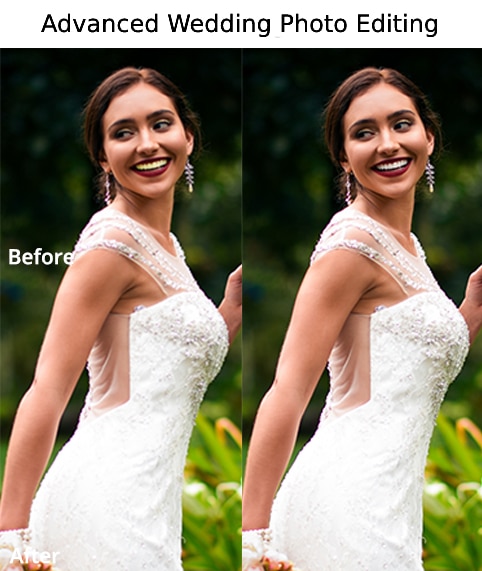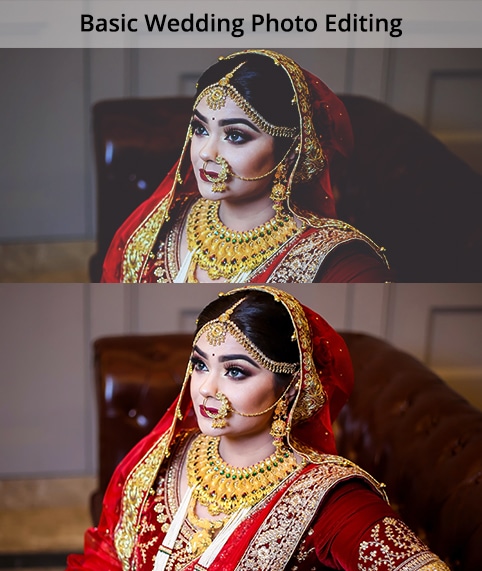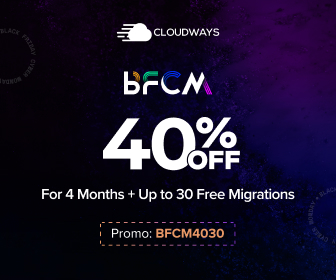Welcome to the dynamic world of content creation, where storytelling and visuals intertwine! In this digital era, video content reigns supreme, captivating audiences across platforms. As an aspiring content creator, mastering professional video editing might seem overwhelming. Fear not, as this guide will navigate you from the basics to advanced tricks and tips on art of video editing.
Embark on this transformative journey to unlock your creative prowess and elevate your videos from ordinary to extraordinary. From fundamental concepts to hands-on software tutorials, discover the key to leaving your audience in awe. Whether you're a vlogger forging personal connections or a filmmaker weaving captivating tales, this guide is your go-to resource for mastering professional video editing. Let's dive in and shape your narrative!
Understanding the Basics of Video Editing
Video editing is the art of assembling and manipulating video footage to create a cohesive and engaging story. Whether you're a content creator, filmmaker, or simply an enthusiast looking to enhance your videos, understanding the fundamentals of video editing is essential to produce high-quality and captivating content. In this article, we'll delve into the core concepts and techniques that lay the foundation for mastering the art of video editing.
1. The Importance of Pre-Production:
Before you even start recording your video footage, it's crucial to have a clear plan in mind. Pre-production involves outlining your video's purpose, target audience, and storyline. Creating a script or shot list can help you stay organized during filming and ensure you capture all the necessary footage to bring your vision to life in the editing room.
2. Getting Familiar with Video Formats and Resolutions:
Videos come in various formats and resolutions, each with its own set of characteristics and use cases. Understanding the differences between common formats like MP4, AVI, and MOV, as well as resolutions like 1080p and 4K, will help you choose the right settings for your project and ensure compatibility with your editing software.
3. Navigating the Editing Software:
The heart of video editing lies in the software you use. There are many options available, ranging from beginner-friendly to professional-grade editing suites. Exploring the interface and features of your chosen software is vital to maximize your editing capabilities and streamline your workflow.
4. Assembling the Timeline:
The timeline is where the magic happens in video editing. It's the canvas on which you piece together your footage, audio, and effects. Understanding how to arrange clips, trim them, and create smooth transitions between scenes will give your video a polished and professional look.
5. Mastering Cuts and Transitions:
The way you transition between shots can significantly impact the flow and pace of your video. Learning the various types of cuts, such as jump cuts, cross dissolves, and wipes, will allow you to craft a seamless and visually appealing narrative.
6. Adding Audio:
Audio plays a crucial role in video editing. Whether it's dialogue, background music, or sound effects, carefully selecting and synchronizing audio elements enhances the overall viewer experience. You'll also learn about audio mixing and how to balance different audio tracks for a harmonious result.
7. Incorporating Visual Effects:
Visual effects can take your videos to a whole new level of creativity. From simple text overlays to complex animations, understanding how to use visual effects judiciously can add depth and impact to your storytelling.
8. Color Correction and Grading:
The colors in your video can evoke emotions and set the tone for your narrative. Learning basic color correction and grading techniques will help you achieve a consistent and visually appealing look throughout your video.
9. Exporting and Sharing Your Work:
Once your masterpiece is complete, you'll need to export it in the appropriate format and resolution for your intended platform. Understanding compression settings and export options will ensure your video looks its best when shared with your audience.
In conclusion, video editing is a powerful tool that allows you to shape your ideas into compelling visual stories. By grasping the basics of video editing, you'll gain the confidence to experiment, innovate, and ultimately create content that resonates with your audience. So, roll up your sleeves, open your editing software, and let your creativity take center stage!
What software should I use as a video editing beginner?
As a video editing beginner, you have several user-friendly and accessible software options to choose from. Here are some popular choices that cater specifically to beginners:
Adobe Premiere Elements:
As a more affordable and scaled-down version of Adobe Premiere Pro, Premiere Elements caters to beginners and enthusiasts. It offers a user-friendly interface, guided edits, and basic video editing tools while still maintaining the renowned Adobe editing capabilities.
iMovie:
iMovie is a free video editing software available exclusively for macOS and iOS devices. It offers a straightforward and intuitive interface, making it ideal for those just starting with video editing. With iMovie, you can easily import, arrange, and edit your clips, add transitions, apply basic effects, and incorporate music and sound effects.
Filmora:
Filmora is a user-friendly video editing software available for both Windows and macOS. It provides a simple drag-and-drop interface, pre-built templates, and a variety of filters and effects that make video editing accessible to beginners without compromising on creativity.
What hardware should I use as a video editing beginner?
As a video editing beginner, having the right hardware is essential to ensure smooth and efficient editing processes. While you don't need the most high-end equipment, investing in certain hardware can significantly enhance your editing experience. Here's a brief overview of the key hardware components you should consider:
1) Computer (Desktop or Laptop):
A powerful computer is the backbone of your video editing setup. Look for a computer with a modern multi-core processor (e.g., Intel Core i7 or AMD Ryzen), at least 16GB of RAM (preferably 32GB or more for smoother performance), and a dedicated graphics card. While desktops generally offer more customization options, some high-performance laptops can also handle video editing tasks effectively.
2) Graphics Card (GPU):
A dedicated GPU with adequate VRAM (Video RAM) can significantly speed up rendering and playback in video editing software. While a powerful GPU is more crucial for complex projects and effects-heavy editing, having one can greatly improve your overall editing experience.
3) Storage:
Internal SSD: Use a solid-state drive (SSD) as your primary drive for the operating system and software. SSDs are much faster than traditional hard disk drives (HDDs), and they significantly reduce loading times and improve overall system responsiveness.
External HDD/SSD: Invest in external storage to store your video files and projects. A high-capacity external HDD or SSD provides ample space for your footage and helps keep your internal drive clutter-free.
4) Audio Equipment:
- Headphones or Speakers: Invest in good-quality headphones or speakers to accurately assess audio quality while editing. Clear audio is essential for producing professional-looking videos.
- Microphone: If you plan to record voice overs or narration, a decent external microphone can significantly improve audio clarity and reduce background noise.
5) Internet Connection:
A stable and reasonably fast internet connection is essential for downloading software updates, accessing online resources, and collaborating with others on cloud-based platforms.
6) Backup Solution:
Always have a reliable backup solution in place to protect your video files and projects. Consider using cloud storage, external drives, or a combination of both to ensure your work is safe from data loss.
Common Video Editing Terminology & Techniques
1) Cut: The most basic video editing technique, where a segment of a clip is removed, resulting in an abrupt transition between scenes.
2) Transitions: Effects used to smoothly move between two clips, such as fade-ins, fade-outs, cross dissolves, wipes, and slide transitions.
3) Timeline: The workspace where video clips, audio, and effects are arranged in chronological order to create the final video.
4) Trimming: Adjusting the in and out points of a video clip to remove unwanted sections and create a precise sequence.
5) Storyboarding: Creating a visual representation of the video's sequence through sketches or images to plan the editing process.
6) Jump Cut: A type of cut where a portion of a clip is removed, resulting in a sudden visual jump in the timeline.
7) B-Roll: Additional footage used to enhance the main storyline or cover transitions in the editing process
8) Export: The process of saving the edited video as a final file, ready for distribution and sharing.
9) Audio Mixing: Balancing and adjusting the levels of different audio elements, such as background music, voiceovers, and sound effects.
10) Color Grading: Enhancing and manipulating the colors in the video to create a specific mood or visual style.
11) Chroma Key (Green Screen): A technique where a specific color (usually green or blue) is removed from the footage and replaced with a different background.
How to Enhance the Productivity of your video editing process
Enhancing the productivity of your video editing process is essential to streamline your workflow, save time, and produce high-quality content efficiently. Here are some tips to help you boost productivity:
Organize Your Files: Create a well-structured folder system to keep your video clips, audio files, graphics, and other assets organized. Naming conventions and subfolders can help you quickly find and access the resources you need during editing.
Plan and Storyboard: Before diving into the editing process, plan your video and create a storyboard. Having a clear vision of your storyline and shot sequences will save time during editing, as you'll know exactly which clips to use and where they fit.
Edit in Stages: Divide your editing process into stages, such as rough cuts, fine-tuning, audio editing, and color grading. This method allows you to focus on specific aspects of editing at different stages and prevents overwhelm.
Automate Repetitive Tasks: Explore automation tools or scripts within your editing software to handle repetitive tasks, such as batch processing, applying effects, or exporting multiple versions.
Invest in Hardware: Ensure your computer meets the recommended specifications for your editing software. Upgrading to a faster processor, more RAM, or a dedicated GPU can significantly improve rendering and playback speeds.
Regularly Save and Back Up: Save your work frequently and consider using auto-save features in your editing software. Additionally, set up a reliable backup system to protect your projects from data loss.Tips for Creating Engaging Videos
Creating engaging videos is essential to capture the attention of your audience and leave a lasting impression. Here are seven tips to help you produce compelling and captivating videos:
Know Your Audience: Understand who your target audience is and what interests them. Tailor your video content to address their needs, preferences, and pain points. Knowing your audience will help you craft a message that resonates with them and keeps them engaged throughout the video.
Start Strong: The first few seconds of your video are crucial in grabbing your viewers' attention. Start with a compelling hook, whether it's an intriguing question, a visually stunning scene, or an attention-grabbing statement. This initial impact will encourage viewers to stay and watch further.
Tell a Story: Humans are naturally drawn to storytelling. Craft a narrative that takes viewers on a journey, evokes emotions, and keeps them invested in your video. Whether it's a personal anecdote, a customer success story, or a fictional plot, a well-told story can captivate and hold your audience's interest.
Keep it Concise: In today's fast-paced digital world, attention spans are shorter than ever. Aim to deliver your message succinctly and avoid unnecessary filler content. Be clear and focused, ensuring every scene or element in the video serves a purpose.
Visual Appeal: Use high-quality visuals and compelling imagery to enhance the video's overall appeal. Pay attention to composition, lighting, and color choices to create visually appealing scenes. Incorporate engaging graphics and animations to add dynamism to your content.
Include Call-to-Action (CTA): Guide your viewers on what action to take after watching the video. Whether it's subscribing to your channel, visiting your website, or leaving a comment, a clear and compelling CTA encourages viewers to interact with your content further.
Incorporate Music and Sound: Music and sound effects can significantly impact the mood and emotional response of your video. Choose appropriate background music or soundscapes that complement the content and create a cohesive experience for the audience.
Bonus Tip: Optimize for Mobile Viewing: With the rise of mobile consumption, ensure your videos are optimized for viewing on smartphones and tablets. Keep subtitles or captions for those watching without sound and use a mobile-friendly format for easy sharing on social media platforms.
Remember, engaging videos are not only about flashy effects but also about connecting with your audience on a deeper level. By incorporating these tips and infusing your unique creativity, you can create videos that leave a lasting impact and keep viewers coming back for more.
Why is video editing worth pursuing?
Video editing is worth pursuing for several compelling reasons, as it offers a plethora of benefits and opportunities for creative expression and professional growth. Here's why video editing is a valuable skill and pursuit:
Career Opportunities: As video content becomes more integral to businesses and organizations, there is an increasing need for skilled video editors. Pursuing video editing can lead to diverse career paths, including film and television production, advertising, content creation, and freelance opportunities.
Expressive Storytelling: Video editing allows you to tell stories through visuals and audio, providing a powerful means of communication and expression. You can evoke emotions, convey messages, and share ideas with a global audience, making a meaningful impact through your creations.
Continuous Learning and Growth: The field of video editing is constantly evolving with new technologies, software, and editing techniques. Pursuing video editing keeps you engaged in continuous learning and encourages you to stay updated with the latest industry trends.
Personal Branding and Influence: Video editing allows you to build a personal brand and establish yourself as an authority in your niche. By consistently creating high-quality and engaging content, you can attract a dedicated following and positively influence others.
Global Reach and Impact: With the power of the internet, your video creations can reach a global audience. This level of exposure provides an excellent platform to showcase your work, connect with like-minded individuals, and build a community around your content.
In conclusion, mastering the art of video editing opens a world of possibilities for content creators, allowing them to transform their ideas into captivating visual narratives. Throughout this beginner's guide, we have explored essential techniques, powerful tools, and expert tips to empower aspiring content creators on their editing journey.
From understanding video formats and resolutions to learning the nuances of transitions, effects, and color grading, each step in the editing process contributes to elevating the quality and impact of your videos.
Embracing a creative and organized approach, backed by continuous learning, will lead to an enhanced editing experience and the ability to craft engaging stories that resonate with your audience.
As you venture into this dynamic realm, remember that video editing is not just about mastering software; it is about storytelling, expressing your unique voice, and leaving a lasting impression. Embrace the learning process, experiment fearlessly, and be open to inspiration from the world around you.
Your journey as a video editor has just begun, and with dedication and passion, your creative potential is boundless. So, let your ideas take flight, your stories come to life, and your videos leave an indelible mark on the hearts of your audience. Happy editing!

